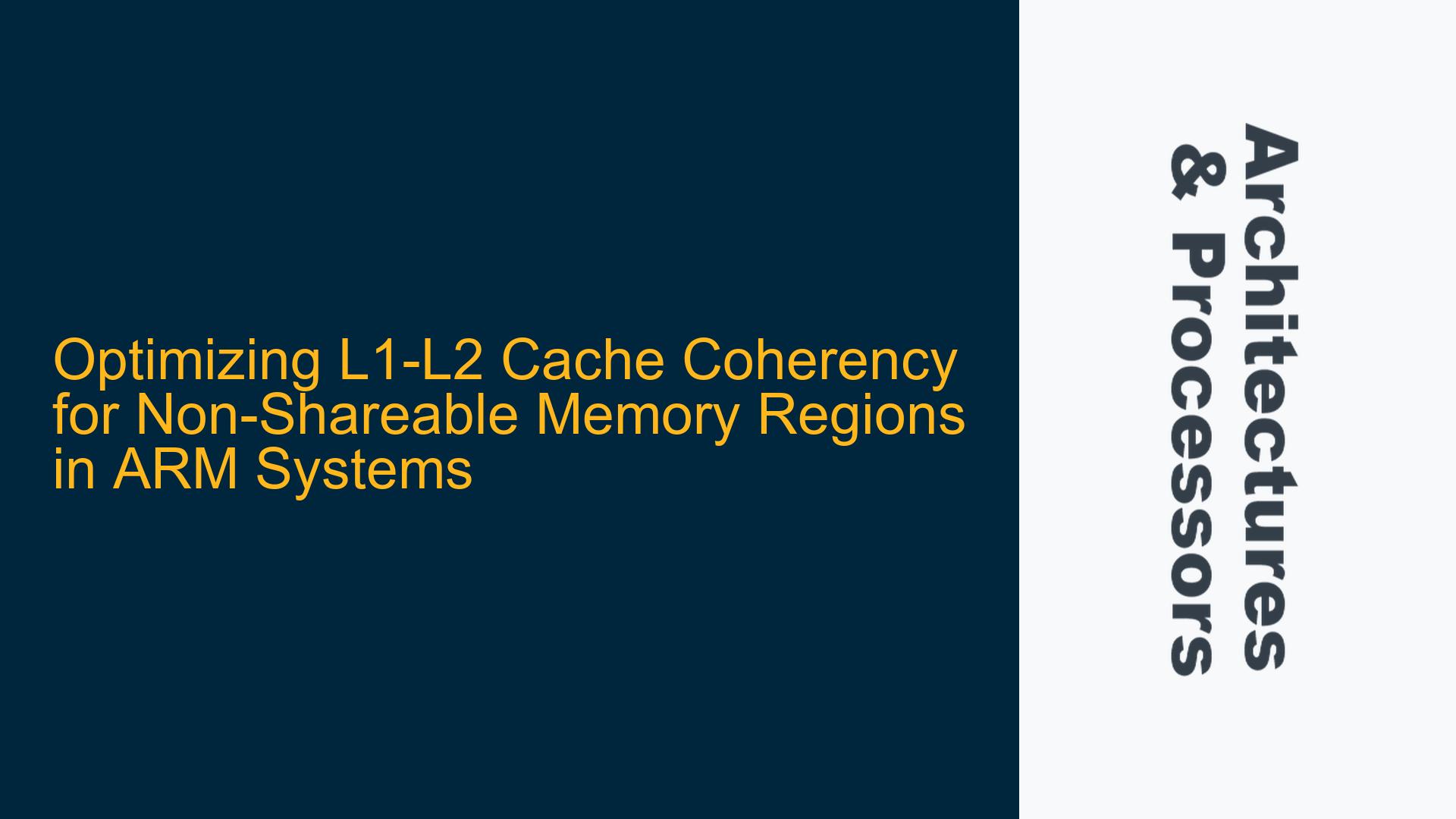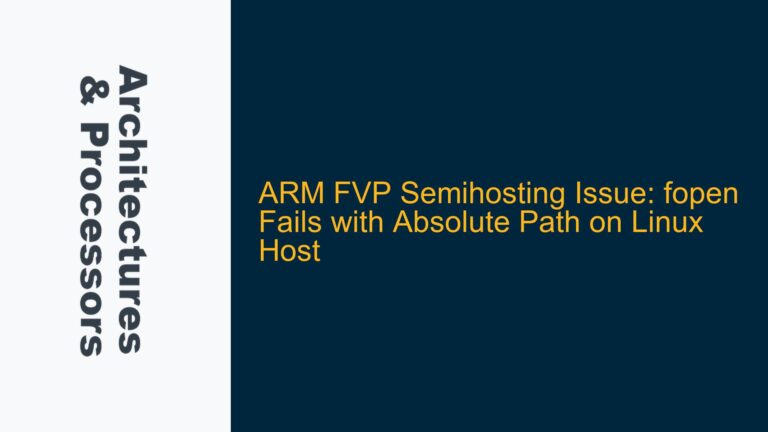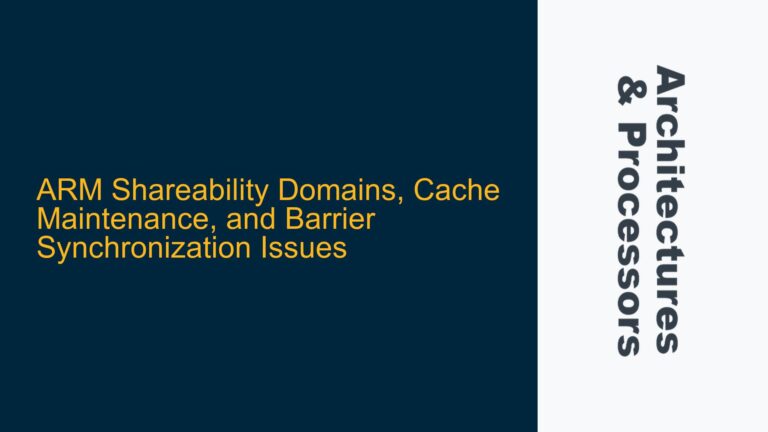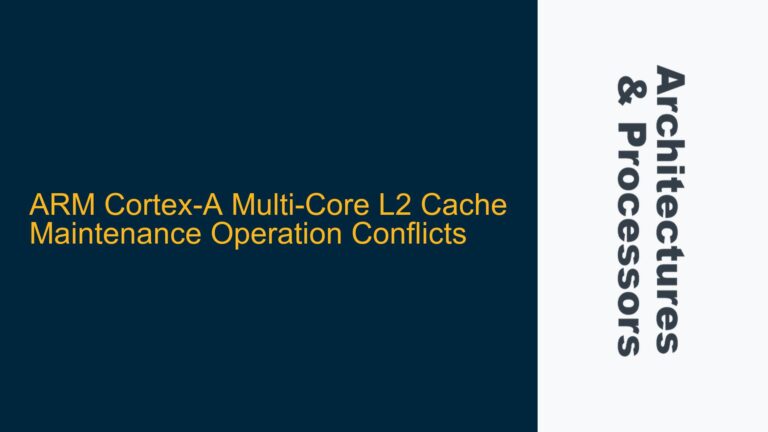ARM Cortex-A Series Cache Coherency Challenges with ReadNoSnoop and Dirty Lines
In ARM-based systems with hierarchical cache architectures, maintaining coherency between L1 and L2 caches for non-shareable memory regions presents unique challenges. Specifically, when an L1 data cache (Dcache) performs a ReadNoSnoop (RNS) operation to fetch a cache line from the L2 Dcache, the handling of dirty lines becomes a critical performance and protocol compliance issue. The L2 Dcache must decide whether to pass a clean or dirty line to the L1 Dcache, each approach having implications for performance, power, and adherence to the ARM ACE (AXI Coherency Extensions) protocol.
The core issue arises when the L1 Dcache, after previously writing and evicting a cache line to the L2 Dcache with an Upstream Dirty (UD) flag, attempts to re-read the same line using a ReadNoSnoop transaction. The L2 Dcache has two options: (1) pass a clean line to the L1 Dcache and write back the dirty line to main memory (e.g., DDR), or (2) pass the dirty line directly to the L1 Dcache and invalidate the line in the L2 Dcache. While the first approach adheres to the ACE protocol, it incurs additional latency and power overhead due to the write-back operation. The second approach, though potentially more efficient, violates the ACE protocol, as RNS transactions are not designed to handle dirty responses.
This issue is particularly relevant in systems where performance and power efficiency are critical, such as mobile devices, automotive systems, and embedded applications. The trade-offs between protocol compliance, performance, and power must be carefully evaluated to determine the optimal solution.
Memory Protocol Constraints and Performance Trade-offs
The primary constraint in this scenario is the ARM ACE protocol, which governs cache coherency and memory transactions in multi-core ARM systems. The ACE protocol explicitly prohibits ReadNoSnoop (RNS) transactions from returning dirty cache lines. This restriction ensures that all cacheable memory regions maintain a consistent view of data across multiple masters and slaves, even in non-shareable memory regions.
When the L1 Dcache issues a ReadNoSnoop request to the L2 Dcache, the L2 Dcache must ensure that the response complies with the ACE protocol. If the requested cache line is dirty, the L2 Dcache has two options: (1) write back the dirty line to main memory and return a clean line to the L1 Dcache, or (2) return the dirty line directly to the L1 Dcache and invalidate the line in the L2 Dcache. The first approach adheres to the ACE protocol but introduces additional latency and power consumption due to the write-back operation. The second approach improves performance and power efficiency but violates the ACE protocol, potentially leading to coherency issues in the system.
Another factor to consider is the impact on system performance. Writing back dirty lines to main memory incurs a significant performance penalty, especially in systems with high memory latency or limited bandwidth. Passing dirty lines directly to the L1 Dcache avoids this penalty but requires careful management of cache invalidation and coherency to prevent data corruption or inconsistency.
Power consumption is also a critical consideration. Write-back operations increase dynamic power consumption due to additional memory accesses, while passing dirty lines directly to the L1 Dcache reduces power consumption but may require additional logic to handle cache invalidation and coherency.
Implementing Custom Cache Management Strategies for Non-Shareable Regions
To address the challenges of L1-L2 cache coherency for non-shareable memory regions, a custom cache management strategy can be implemented. This strategy must balance performance, power efficiency, and protocol compliance while ensuring data integrity and system stability.
The first step is to evaluate the system’s performance and power requirements. If performance and power efficiency are prioritized over strict ACE protocol compliance, a modified cache management strategy can be implemented. This strategy involves extending the L2 Dcache controller to handle dirty line responses for ReadNoSnoop transactions in non-shareable memory regions. The L2 Dcache controller must be enhanced to track dirty lines and manage cache invalidation when passing dirty lines to the L1 Dcache.
The modified L2 Dcache controller should include the following components:
- A dirty line tracking mechanism to identify cache lines that have been modified by the L1 Dcache.
- A cache invalidation logic to invalidate dirty lines in the L2 Dcache after passing them to the L1 Dcache.
- A protocol compliance checker to ensure that modified transactions do not violate the ACE protocol in shareable memory regions.
To implement this strategy, the following steps are recommended:
- Modify the L2 Dcache controller to support dirty line responses for ReadNoSnoop transactions in non-shareable memory regions.
- Implement a dirty line tracking mechanism to identify and manage dirty lines in the L2 Dcache.
- Add cache invalidation logic to ensure that dirty lines are invalidated in the L2 Dcache after being passed to the L1 Dcache.
- Verify the modified cache management strategy through simulation and testing to ensure compliance with system requirements and data integrity.
The following table summarizes the key differences between the standard and modified cache management strategies:
| Feature | Standard Strategy | Modified Strategy |
|---|---|---|
| Dirty Line Handling | Write back to main memory | Pass dirty line to L1 Dcache |
| ACE Protocol Compliance | Fully compliant | Partially compliant (non-shareable regions only) |
| Performance Impact | High (due to write-back) | Low (direct line transfer) |
| Power Consumption | High (due to write-back) | Low (reduced memory access) |
| Implementation Complexity | Low | High (requires custom logic) |
By implementing a custom cache management strategy, system designers can optimize performance and power efficiency for non-shareable memory regions while maintaining data integrity and system stability. However, this approach requires careful design and verification to ensure that it meets system requirements and does not introduce new issues.
In conclusion, the handling of dirty lines in L1-L2 cache coherency for non-shareable memory regions is a complex issue that requires a thorough understanding of ARM architectures, cache protocols, and system requirements. By carefully evaluating the trade-offs between performance, power, and protocol compliance, and implementing a custom cache management strategy, system designers can achieve optimal performance and efficiency while ensuring data integrity and system stability.





